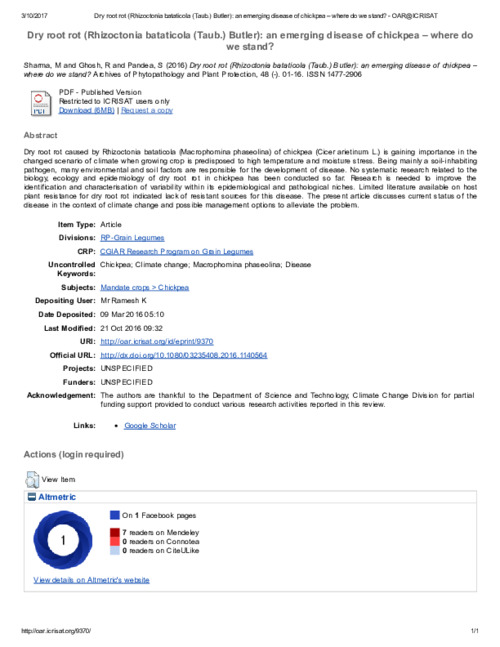Dry root rot (Rhizoctonia bataticola (Taub.) Butler): an emerging disease of chickpea – where do we stand?
Abstract
Dry root rot caused by Rhizoctonia bataticola (Macrophomina phaseolina) of chickpea (Cicer arietinum L.) is gaining importance in the changed scenario of climate when growing crop is predisposed to high temperature and moisture stress. Being mainly a soil-inhabiting pathogen, many environmental and soil factors are responsible for the development of disease. No systematic research related to the biology, ecology and epidemiology of dry root rot in chickpea has been conducted so far. Research is needed to improve the identification and characterisation of variability within its epidemiological and pathological niches. Limited literature available on host plant resistance for dry root rot indicated lack of resistant sources for this disease. The present article discusses current status of the disease in the context of climate change and possible management options to alleviate the problem

